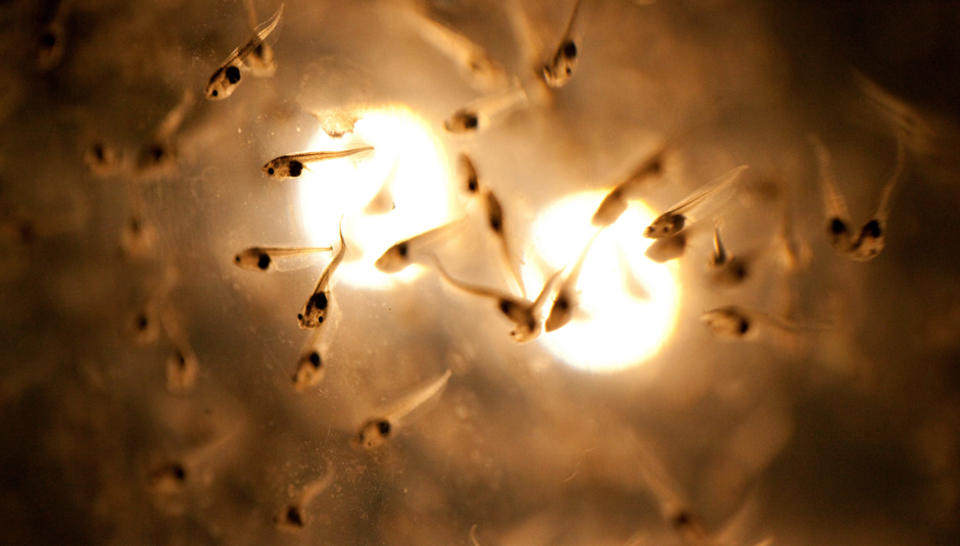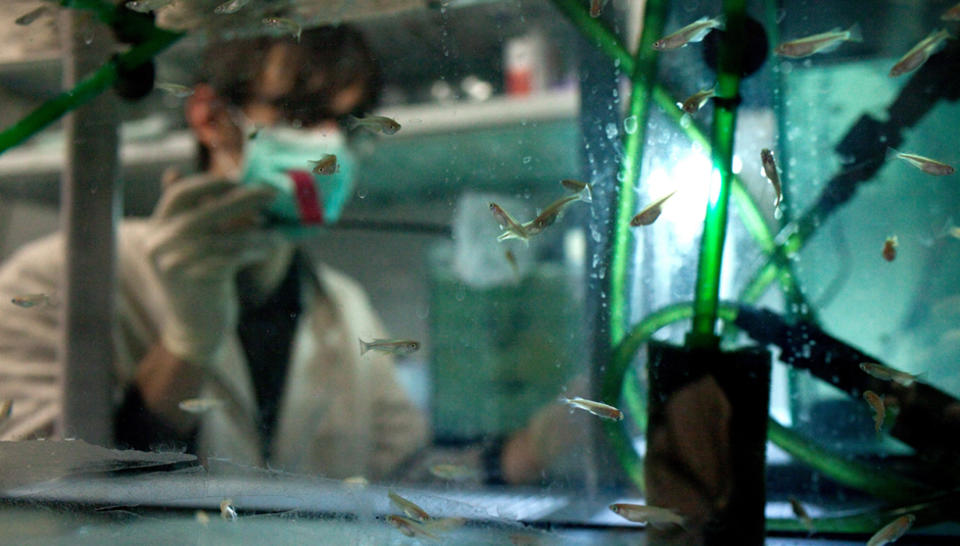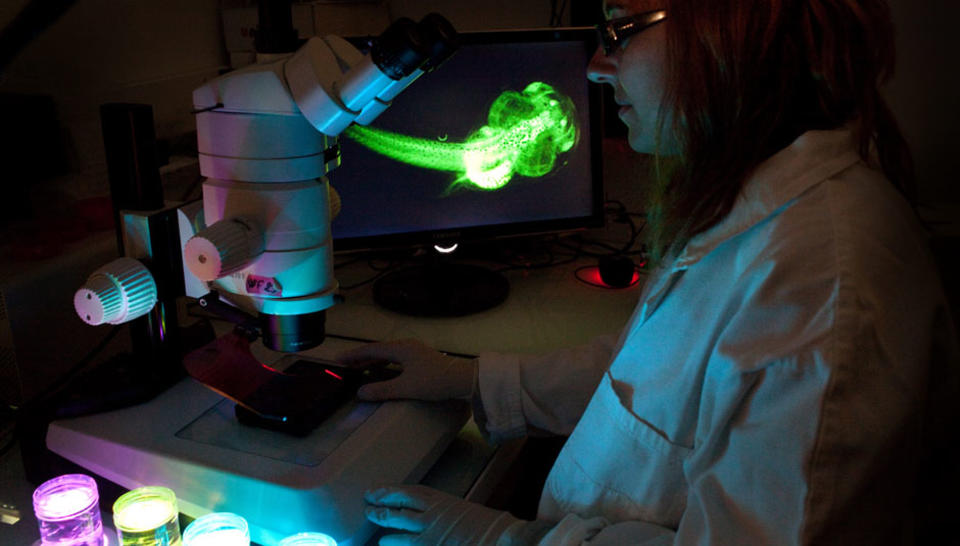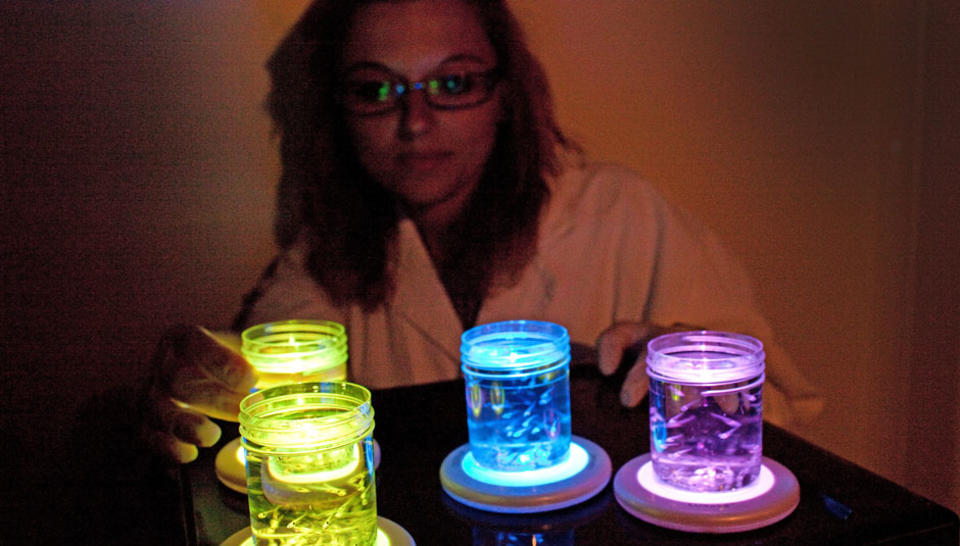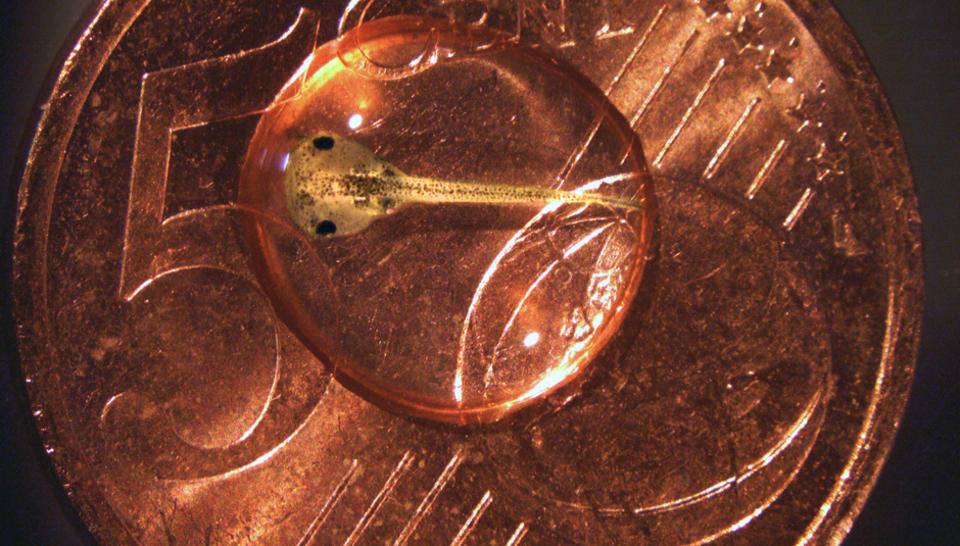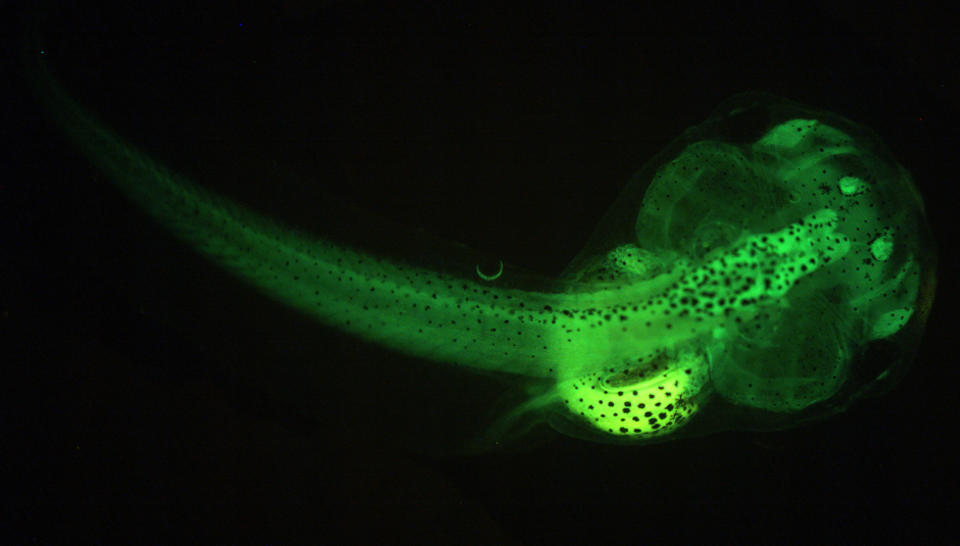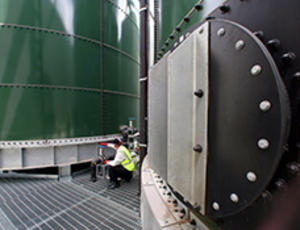ENDOCRINE DISRUPTORS: A RISK TO BIODIVERSITY
Endocrine disruptors – waste substances generated from industrial, agricultural and human activity – pose a new danger to biodiversity and even human health.
To assess this risk, the French company WatchFrog and Veolia have developed smart biosensors.
Bisphenol A is one of a number of identified endocrine disruptors. In 2011 it was banned from baby bottles in Europe, and as of January 1, 2013, France prohibited its use in any food containers intended for children under the age of three.
FLUORESCENT TADPOLES TO SHOW THE PRESENCE OF DISRUPTORS
Fluorescent fish larvae and tadpoles can indicate the presence of endocrine disruptors in wastewater. An innovative technology is used to turn frog larvae fluorescent when they are exposed to pollutants of this kind. The greater the disruption, the more fluorescent the larvae. An appropriate treatment system can then be selected, based on the level of need.
Half of all dietary exposure to bisphenol A comes from canned food products.
(Source: ANSES – French Agency for Food, Environmental and Occupational Health & Safety)


